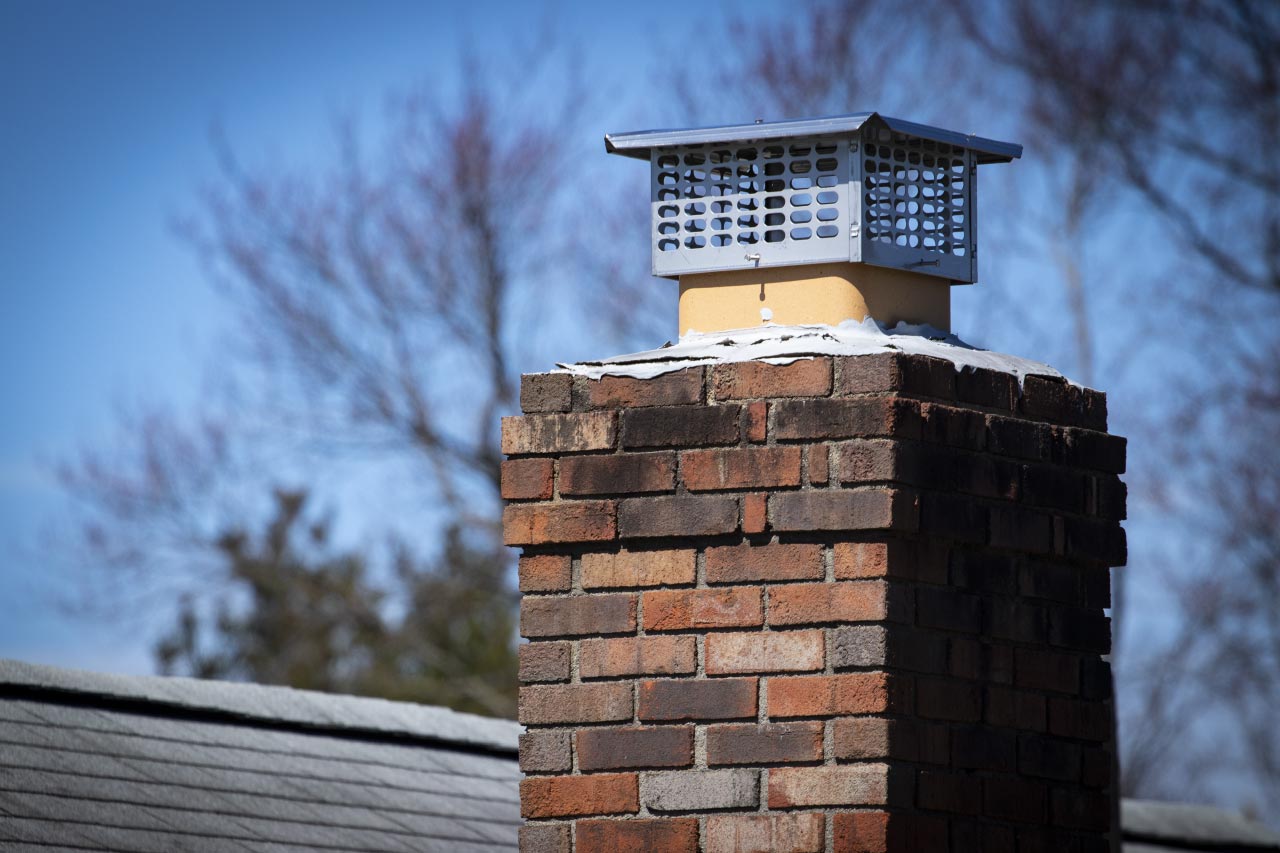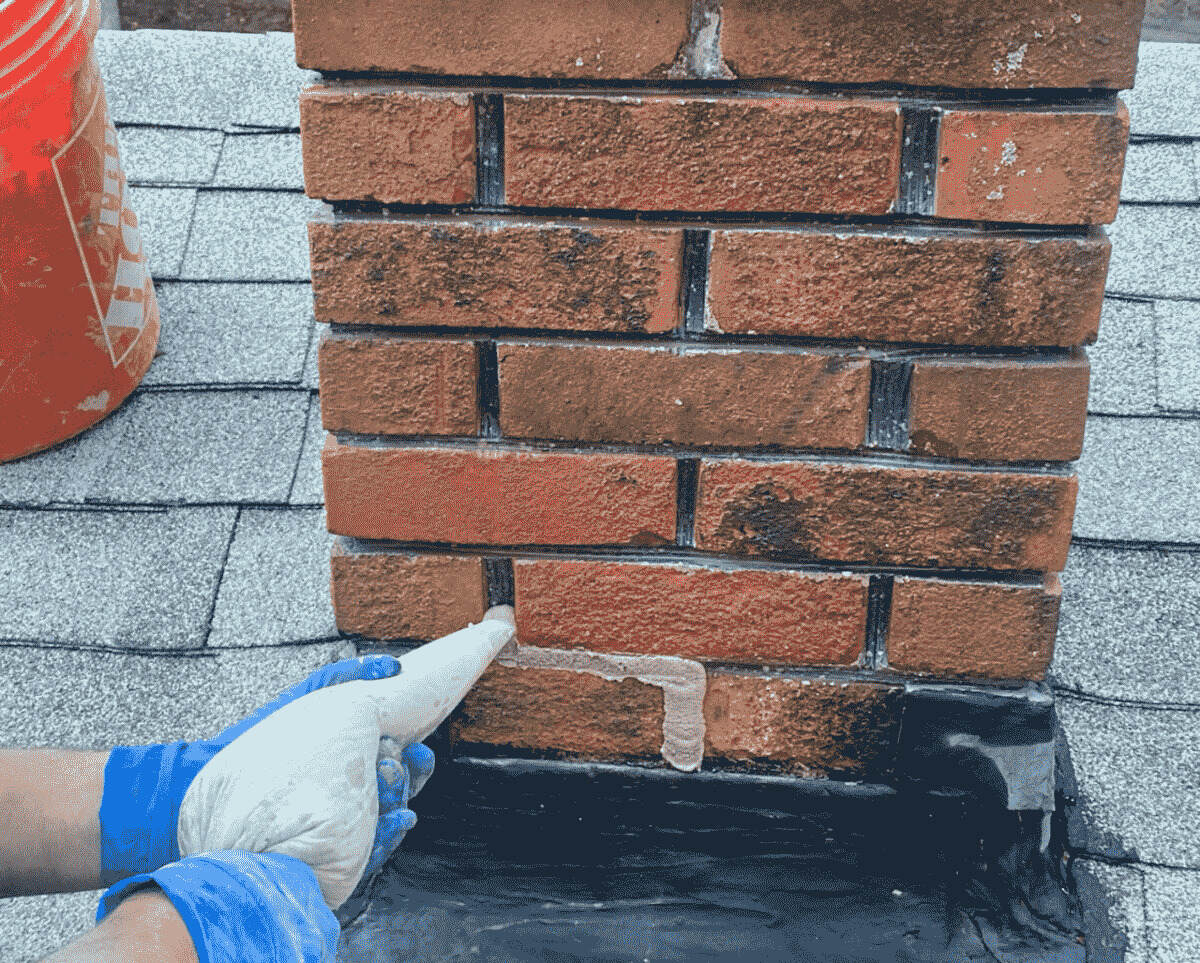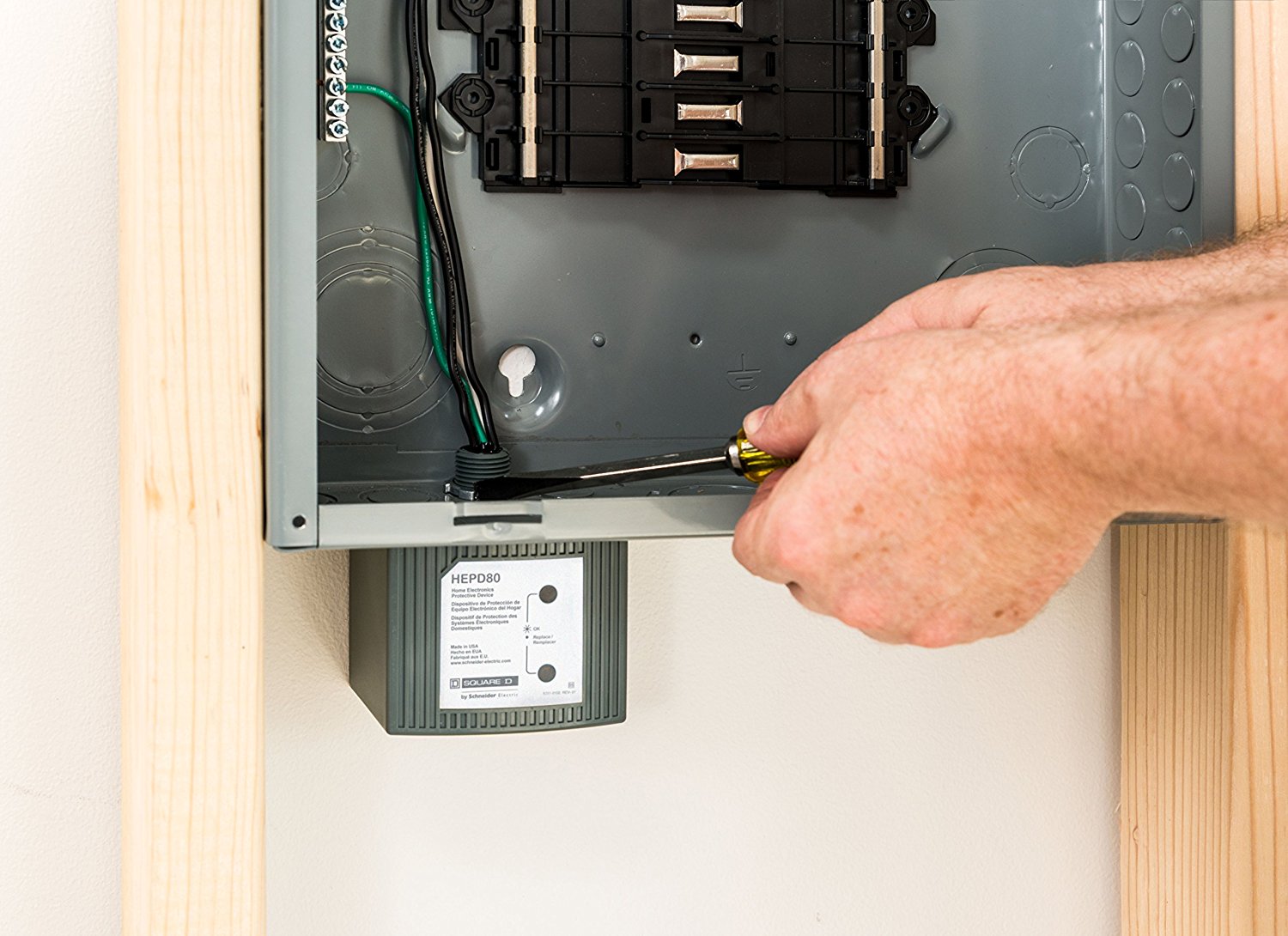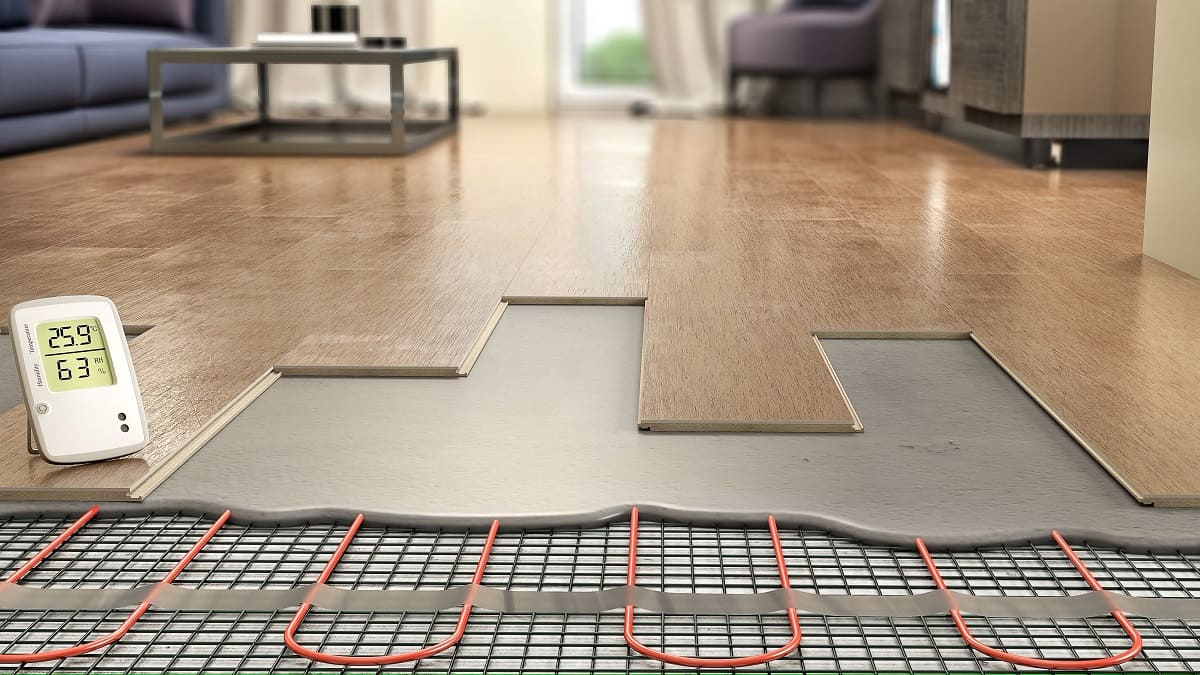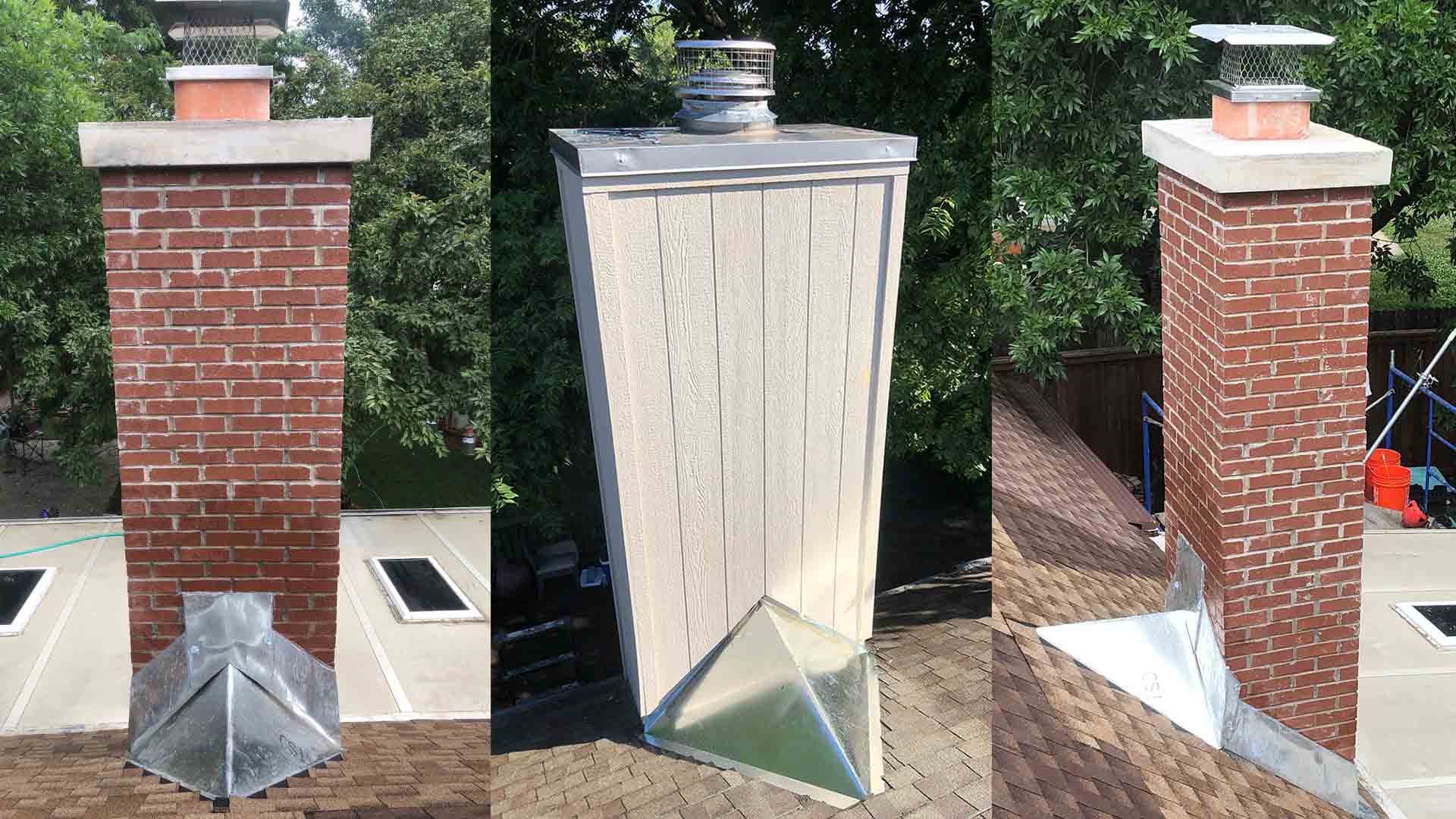Home>Home Maintenance>How Much Does Power Steering Repair Cost
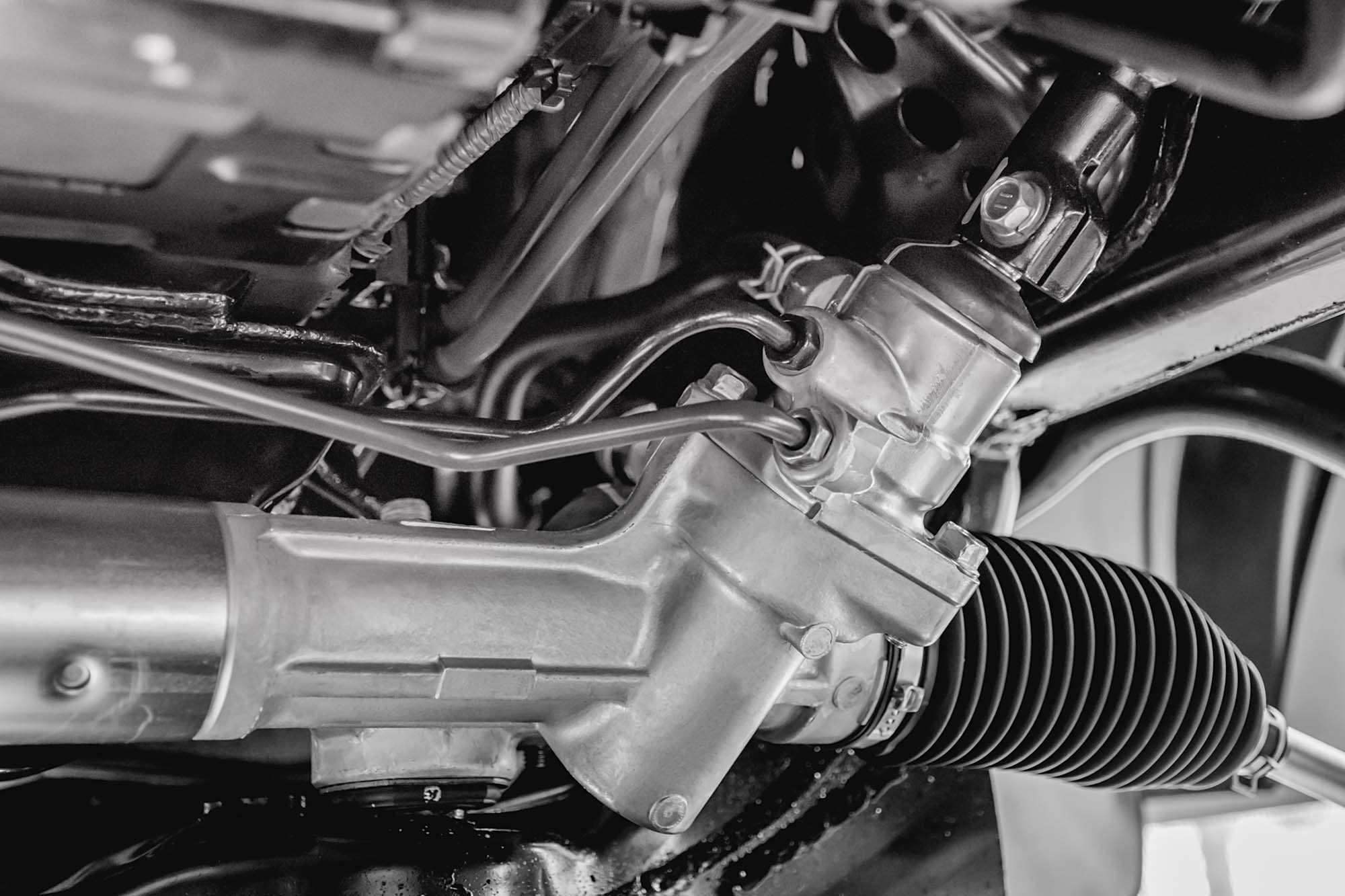

Home Maintenance
How Much Does Power Steering Repair Cost
Modified: March 6, 2024
Get an idea of the average cost of power steering repair for your home maintenance needs. Find out what factors can affect the price and make an informed decision.
(Many of the links in this article redirect to a specific reviewed product. Your purchase of these products through affiliate links helps to generate commission for Storables.com, at no extra cost. Learn more)
Introduction
Welcome to our comprehensive guide on power steering repair costs. Maintaining a properly functioning power steering system is essential for the smooth operation of your vehicle. The power steering system allows you to effortlessly maneuver your car, giving you greater control and a more enjoyable driving experience.
However, over time, your power steering system may start experiencing issues. Whether it’s a leaking power steering pump, a worn-out steering rack, or a malfunctioning power steering belt, these problems can affect the performance and safety of your vehicle.
In this article, we will delve into common power steering problems, discuss the symptoms to watch out for, and explore the factors that can affect the cost of power steering repair. Additionally, we’ll provide insights on both do-it-yourself (DIY) repair options and professional power steering repair costs. By the end, you’ll be equipped with valuable knowledge on how to reduce power steering repair costs without compromising on quality.
Whether you’re a dedicated DIY enthusiast or prefer to leave it to the professionals, understanding power steering repair costs will help you make informed decisions and ensure that your vehicle remains in optimal condition. So, let’s dive in and explore everything you need to know about the cost of power steering repair!
Key Takeaways:
- Power steering repair costs can range from $200 to $800 or more, depending on the issue and parts involved. Regular maintenance and timely repairs can help minimize expenses and ensure a smooth driving experience.
- DIY power steering repairs can save on labor costs, but it’s crucial to assess your skills and have the necessary tools. Professional repairs offer expertise and warranty, providing peace of mind for complex issues.
Read more: How Much Does Chimney Inspection Cost
Importance of Power Steering
Power steering is a crucial component of modern vehicles that provides effortless control and maneuverability. It plays a vital role in helping you navigate your vehicle smoothly, especially at low speeds or when parking. Without a properly functioning power steering system, the steering wheel would require significantly more effort to turn, making it difficult and exhausting to drive.
One of the key benefits of power steering is that it allows for variable steering assistance. This means that the amount of power assistance provided by the system can be adjusted based on the driving conditions. At higher speeds, the power steering system reduces assistance to offer a firmer and more stable steering feel. Conversely, at lower speeds, the system increases assistance to make steering easier and more responsive.
Another significant advantage of power steering is its ability to enhance safety. The effortless control it provides allows drivers to maintain better control over their vehicles, especially in emergency situations where quick maneuvers are crucial. This can help prevent accidents and improve overall road safety.
Moreover, power steering reduces the wear and tear on other components of the steering system, such as the steering column and steering linkage. It absorbs the forces generated by turning the steering wheel and distributes them throughout the system, minimizing the strain on individual parts. As a result, a well-maintained power steering system can extend the lifespan of the entire steering system, reducing the need for costly repairs or replacements.
Overall, power steering is not only an essential feature for convenience and ease of driving, but it also plays a pivotal role in enhancing safety and prolonging the longevity of your vehicle’s steering system. Regular maintenance and prompt repairs are crucial in ensuring that your power steering system operates at its optimal level, allowing you to enjoy a smooth and hassle-free driving experience.
Common Power Steering Problems
Like any other mechanical system, power steering systems can experience issues over time. Understanding the common problems that can arise will help you identify and address them promptly. Let’s take a look at some of the most common power steering problems:
- Power Steering Fluid Leaks: One of the primary issues encountered with power steering systems is fluid leakage. This can be caused by a variety of factors, such as worn-out seals, cracked hoses, or a faulty power steering pump. If you notice puddles of fluid under your vehicle or difficulty in turning the steering wheel, it’s likely that your power steering system has a leak.
- Power Steering Pump Failure: The power steering pump is responsible for generating hydraulic pressure that assists with steering. Over time, the pump may wear out, leading to a decrease in power assistance or complete failure. This can result in increased effort required to turn the steering wheel or a whining noise coming from the pump.
- Steering Rack Issues: The steering rack is an essential component that translates the rotational motion of the steering wheel into linear motion, allowing the wheels to turn. Common steering rack problems include leaks, wear, or damage to the rack and pinion gears. You may experience uneven steering, a loose or tight steering wheel, or unusual noises when turning.
- Power Steering Belt Problems: The power steering belt is responsible for transferring power from the engine to the power steering pump. Over time, the belt can become loose, cracked, or broken, resulting in power steering failure. Symptoms include a squealing noise when turning the steering wheel or increased effort needed to steer.
- Contaminated Power Steering Fluid: Over time, power steering fluid can become contaminated with debris, dirt, or moisture. This can lead to decreased lubrication and compromised performance of the power steering system. Symptoms of contaminated fluid include difficulty in turning the steering wheel smoothly or a groaning noise when steering.
These are just a few examples of the common power steering problems that vehicle owners may encounter. It’s essential to diagnose and address these issues promptly to prevent further damage and ensure optimal performance of your power steering system. Regular maintenance, including fluid checks and inspections, can help identify potential problems early on and save you from costly repairs down the line.
Symptoms of Power Steering Issues
Recognizing the symptoms of power steering issues is crucial for identifying and addressing problems before they worsen. Here are some common symptoms that may indicate power steering problems:
- Difficulty Turning the Steering Wheel: If you find it increasingly difficult to turn the steering wheel, especially at low speeds or when parking, it may be a sign of power steering problems. This could indicate issues such as a leaking power steering pump, a worn-out steering rack, or a malfunctioning power steering belt.
- Whining or Squealing Noise: Unusual noises, such as a whining or squealing sound when turning the steering wheel, can signal power steering issues. This may be caused by a malfunctioning power steering pump, a loose or worn power steering belt, or inadequate power steering fluid.
- Steering Wheel Vibrations: If you experience vibrations or shaking in the steering wheel while driving, it could be a sign of power steering problems. This may indicate issues with the power steering pump, a bent or damaged steering component, or imbalanced wheels.
- Steering Wheel Misalignment: Another symptom of power steering issues is steering wheel misalignment. If your steering wheel is not centered or feels off-center while driving straight, it may indicate problems with the power steering system, such as a misaligned steering rack or improper adjustments.
- Fluid Leaks: Power steering fluid leaks are a clear indication of power steering problems. If you notice puddles of fluid under your vehicle or damp spots around the power steering component, it’s important to address the issue promptly to prevent further damage to the system.
- Intermittent or Loss of Power Steering Assistance: A sudden loss of power steering assistance or intermittent power steering failures can be a significant symptom of power steering issues. This may be caused by a malfunctioning power steering pump, a faulty pressure hose, or a malfunctioning electronic power steering system.
If you experience any of these symptoms, it is advisable to have your power steering system checked by a qualified mechanic. Ignoring power steering problems can lead to further damage to the system and compromise your vehicle’s safety and performance. Prompt diagnosis and repair will help ensure the longevity and optimal functioning of your power steering system.
Factors Affecting Power Steering Repair Cost
The cost of power steering repair can vary depending on several factors. Understanding these factors will help you anticipate and estimate the potential expenses associated with repairing your power steering system. Here are the key factors that can affect the power steering repair cost:
- Type of Power Steering System: The type of power steering system in your vehicle can have a significant impact on the repair cost. There are two main types: hydraulic power steering (HPS) and electric power steering (EPS). EPS systems tend to be more complex and may require specialized diagnostic equipment, which can increase the repair cost compared to HPS systems.
- Nature of the Problem: The specific issue affecting your power steering system will also influence the repair cost. Some problems, such as minor leaks or worn-out hoses, may have relatively lower repair costs. However, more severe issues like a damaged steering rack or a faulty power steering pump can be more expensive to repair.
- Parts and Components: The cost of parts and components required for the repair can significantly impact the overall repair cost. OEM (Original Equipment Manufacturer) parts tend to be more expensive than aftermarket options, but they often come with better quality and reliability. The complexity and availability of the required parts can also affect the repair cost.
- Labor Costs: The cost of labor for power steering repairs can vary depending on the location, repair shop rates, and the expertise of the technicians. Some repairs, such as replacing a power steering belt, may require less labor compared to more complex tasks, like replacing a steering rack. Labor costs can significantly contribute to the overall repair expenses.
- Vehicle Make and Model: The make and model of your vehicle can influence the repair cost. Luxury or high-end vehicles may have higher repair costs due to the availability and cost of specialized parts. Additionally, some vehicles may have power steering systems that are more intricate or require specific techniques for repair, which can impact the cost as well.
- Additional Repairs or Services: During the power steering repair process, other related components or systems may be identified as needing attention or replacement. For example, if the power steering pump needs to be replaced, it may be necessary to replace the serpentine belt as well. These additional repairs or services can contribute to the overall cost.
It’s important to keep in mind that the actual repair cost will vary based on these factors and may differ between repair shops. Obtaining multiple quotes from reputable repair shops and discussing the details of your power steering issue can help you make an informed decision and find the best balance between quality and cost.
Read more: How Much Does It Cost To Clean A Chimney
Power Steering Repair Options
When faced with power steering problems, it’s important to understand your repair options. Depending on the severity of the issue and your level of technical expertise, you can choose between two main options: DIY repair or professional repair. Let’s explore each option:
- DIY Power Steering Repair: If you have mechanical skills and access to the necessary tools, you may choose to perform the power steering repair yourself. DIY repair can be a cost-effective option, as you won’t have to pay for labor costs. However, it’s important to assess your level of expertise and ensure you have the knowledge required to complete the repair correctly. It’s also essential to follow proper safety procedures and use reliable repair guides or resources to guide you through the process.
- Professional Power Steering Repair: If you’re not confident in your own repair abilities or the issue is complex, it’s recommended to seek the services of a professional mechanic. A qualified technician will have the experience, expertise, and equipment necessary to accurately diagnose and repair power steering problems. They will also be able to provide you with a warranty on the repairs, giving you peace of mind. While professional repair may be more expensive due to labor costs, it offers convenience and ensures the job is done right.
When deciding between DIY repair and professional repair, consider factors such as your level of skill and comfort with automotive repairs, the complexity of the problem, the availability of tools and resources, and the overall cost. It’s advisable to weigh the pros and cons of each option and choose the approach that best meets your needs and abilities.
Regardless of the repair option you choose, it’s important to address power steering problems promptly. Ignoring these issues can lead to further damage and potentially compromise your safety on the road. Regular maintenance and inspection of the power steering system can help catch problems early and prevent more costly repairs down the line.
The cost of power steering repair can vary depending on the extent of the damage and the specific make and model of the vehicle. On average, the cost can range from $200 to $600 for parts and labor. It’s important to get a few quotes from different mechanics to ensure you’re getting a fair price.
Average Cost of Power Steering Repair
The cost of power steering repair can vary depending on the specific issue, the type of vehicle, and the repair shop. While it’s difficult to provide an exact cost without knowing the specific problem, we can provide a general overview of the average repair costs for common power steering issues.
On average, power steering repairs can range from $200 to $800 or more, depending on the severity of the problem and the parts involved. Here’s a breakdown of some typical power steering repair costs:
- Power Steering Pump Replacement: The cost of replacing a power steering pump can range from $300 to $500, including parts and labor.
- Power Steering Rack Replacement: If you need to replace the steering rack, the average cost can range from $600 to $1,200, depending on the make and model of your vehicle.
- Power Steering Hose Replacement: The cost of replacing a power steering hose can range from $100 to $300, depending on the length and complexity of the hose and the labor involved.
- Power Steering Fluid Flush: A power steering fluid flush typically costs around $100 to $150, including the cost of labor and new fluid.
- Power Steering Belt Replacement: If you need to replace the power steering belt, expect to pay around $50 to $100, depending on the vehicle’s make and model.
These figures are approximate averages and can vary based on various factors, such as the location, the specific repair shop rates, and the type of vehicle. Additionally, additional repairs or services, such as alignment or other related components, can add to the overall cost.
It’s important to note that these estimates are for professional repair services and may not include the cost of parts or additional repairs if needed. Furthermore, prices can fluctuate over time, so it’s always a good idea to obtain multiple quotes and discuss the details of your power steering issue with a reputable repair shop before making a decision.
By having a general understanding of the average cost range for power steering repairs, you can be better prepared and informed when discussing the repair options and estimates with a mechanic.
DIY Power Steering Repair Costs
Opting for a do-it-yourself (DIY) power steering repair can save you money on labor costs. However, it’s important to consider the potential expenses involved in DIY repairs, including the cost of parts, tools, and other necessary items. Here’s a breakdown of the DIY power steering repair costs you may encounter:
- Parts: The cost of power steering repair parts can vary depending on the specific issue and your vehicle’s make and model. Replacement parts, such as a power steering pump, steering rack, hoses, or belts, can range from $50 to $500 or more, depending on the quality and brand.
- Tools: DIY power steering repairs require specific tools to complete the job properly. Basic tools, such as wrenches, sockets, pliers, and a power steering pulley remover, may already be in your toolbox. However, in some cases, specialized tools may be needed, which may need to be purchased or rented. The cost of these tools can range from $20 to $200 or more, depending on the complexity of the repair and the tool requirements.
- Additional Items: Depending on the specific repair, you may need to purchase additional items such as power steering fluid, sealant, or gaskets. These items can usually be acquired for $15 to $50, depending on the quantity and brand.
- Repair Guides or Resources: If you’re not familiar with power steering repairs, you may need to invest in repair guides or resources to help you through the process. These can range from free online tutorials to paid repair manuals, which can cost around $20 to $100, depending on the format and level of detail.
While DIY power steering repairs have the potential to save you money on labor costs, it’s important to accurately assess your skills and comfort level with automotive repairs. Additionally, it’s crucial to have the necessary tools and knowledge to complete the repair correctly and safely. Properly diagnosing the problem and following the appropriate repair procedures are essential for a successful DIY repair.
It’s also important to note that DIY repairs may not come with a warranty, and any mistakes or improper repairs can lead to further damage or safety issues. If you’re uncertain about the repair or if the issue is complex, it’s recommended to seek the assistance of a professional mechanic to avoid potential risks.
By considering the costs involved in DIY power steering repairs, you can make an informed decision and determine whether it’s a feasible and cost-effective option for your specific situation.
Professional Power Steering Repair Costs
When opting for professional power steering repair, it’s important to understand the potential costs involved. While prices can vary depending on factors like location, repair shop rates, and the specific issue, there are some average costs you can expect for professional power steering repairs. Here’s an overview:
- Diagnostics Fee: Some repair shops may charge a diagnostics fee to inspect your power steering system and identify the underlying issue. This fee can range from $50 to $150, depending on the shop and their policies.
- Parts: The cost of parts for professional power steering repairs will vary depending on the specific issue, your vehicle’s make and model, and the quality of the parts used. For example, replacement parts like power steering pumps, steering racks, hoses, or belts can range from $100 to $800 or more, depending on the complexity and brand of the parts.
- Labor: Labor costs are a significant portion of professional power steering repair expenses. The amount of labor required for power steering repairs can vary depending on the complexity of the issue. On average, you can expect to pay around $80 to $150 per hour for labor, with the total labor time depending on the specific repair job.
- Additional Repairs or Services: During the power steering repair process, the mechanic may identify additional repairs or services that are needed. For example, if the power steering pump needs to be replaced, it may be recommended to also replace the serpentine belt. These additional repairs or services will add to the overall cost of the power steering repair.
- Taxes and Fees: Depending on your location, there may be additional taxes or fees applied to the power steering repair cost. These can vary and should be accounted for when estimating your expenses.
It’s important to note that these are average costs and can vary based on several factors. Prices can also fluctuate between different repair shops and locations. To ensure accurate estimates, it’s advisable to obtain multiple quotes from reputable repair shops and discuss the specific details of your power steering issue with each mechanic.
While professional power steering repairs may be more expensive compared to DIY repairs, they offer the expertise, experience, and warranty that come with trained professionals. Professionals can diagnose the issue accurately, perform the repair correctly, and offer added peace of mind. This can be particularly beneficial for complex power steering problems or for individuals who are not comfortable performing repairs themselves.
By understanding the potential costs involved in professional power steering repairs, you can make an informed decision and choose the option that best suits your needs and budget.
Read more: How Much Does It Cost To Replace A Chimney
Tips for Reducing Power Steering Repair Costs
Power steering repairs can sometimes be expensive, but there are several tips and strategies you can follow to help reduce the overall repair costs. By taking a proactive approach and being mindful of your power steering system’s maintenance, you can potentially save money on repairs. Here are some useful tips:
- Maintain Regular Inspections: Schedule regular inspections of your power steering system to detect any issues early on. By catching problems in the early stages, you may be able to address them before they escalate into more costly repairs.
- Check and Top-up Fluid Levels: Power steering fluid is essential for the proper functioning of your system. Regularly check the fluid levels and top them up as needed. Low fluid levels can cause problems and lead to expensive repairs, so it’s crucial to keep them properly maintained.
- Address Leaks Promptly: If you notice any power steering fluid leaks, address them promptly. Ignoring leaks can result in further damage to the system and costlier repairs down the line. Have the leaks repaired as soon as possible to prevent any additional complications.
- Use Quality Fluid: When topping up or replacing power steering fluid, use a high-quality fluid recommended by your vehicle manufacturer. Using the right fluid can help maintain the system’s integrity and performance, reducing the likelihood of problems and costly repairs.
- Follow Maintenance Guidelines: Regularly follow the maintenance guidelines provided by your vehicle manufacturer. By adhering to scheduled maintenance tasks, such as fluid changes or belt replacements, you can prevent premature wear and minimize the chances of power steering issues.
- Consider Aftermarket Parts: When replacing components of your power steering system, consider using high-quality aftermarket parts. These parts can be cost-effective alternatives to OEM parts, while still maintaining the required performance and durability.
- Shop Around for Estimates: Before committing to a repair shop, obtain multiple quotes from reputable mechanics. Comparison shopping helps you get a better understanding of the fair market price for the repair and may give you the opportunity to negotiate a more competitive rate.
- Consider Certified Mechanics: Look for repair shops that employ certified mechanics who specialize in power steering repairs. Certified mechanics often have the expertise and experience necessary to diagnose and repair the problem accurately, reducing the likelihood of unnecessary repairs and associated costs.
- Explore Warranty Coverage: If your vehicle is still under warranty, check the terms and conditions for power steering repairs. Some components may be covered by the warranty, potentially resulting in significant savings on repair costs.
By implementing these tips, you can proactively maintain your power steering system and potentially reduce the overall repair costs. Remember, regular inspections, timely repairs, and proper maintenance are key to preventing major power steering problems and the associated expenses.
However, it’s important to strike a balance between cost-saving measures and ensuring high-quality repairs. Avoid compromising on the quality of parts or workmanship, as it may result in inadequate repairs and potentially higher costs in the long run. Always prioritize the safety and reliability of your power steering system when making repair decisions.
Conclusion
Power steering is an essential component of any vehicle, providing effortless control and maneuverability. Dealing with power steering problems can be frustrating and costly, but by understanding the common issues, symptoms, and factors that affect repair costs, you can make informed decisions to minimize expenses without compromising on quality.
Whether you choose to tackle power steering repairs on your own or seek the assistance of a professional mechanic, it’s important to prioritize the safety and reliability of your vehicle. Regular maintenance, inspections, and timely repairs are key to preventing major power steering problems and reducing the likelihood of more expensive repairs down the line.
While DIY repairs can save you money on labor costs, it’s crucial to assess your skills and comfort level with automotive repairs. Be sure to have the necessary tools, resources, and expertise to complete the repair correctly and safely. If you’re uncertain about your abilities or if the issue is complex, it’s wise to consult a professional mechanic to avoid potential risks.
When seeking professional power steering repairs, obtain multiple quotes and consider certified mechanics who specialize in power steering repairs. By shopping around and exploring warranty coverage, you may be able to find the most cost-effective and reliable solution for your power steering issues.
In conclusion, maintaining a properly functioning power steering system is vital for a smooth and safe driving experience. By staying proactive, addressing issues promptly, and making informed decisions, you can minimize power steering repair costs and enjoy the benefits of a properly functioning power steering system for years to come.
Remember, power steering is not just a convenience—it’s a fundamental component that contributes to the overall performance and safety of your vehicle. Take care of your power steering system, and it will take care of you.
Frequently Asked Questions about How Much Does Power Steering Repair Cost
Was this page helpful?
At Storables.com, we guarantee accurate and reliable information. Our content, validated by Expert Board Contributors, is crafted following stringent Editorial Policies. We're committed to providing you with well-researched, expert-backed insights for all your informational needs.


